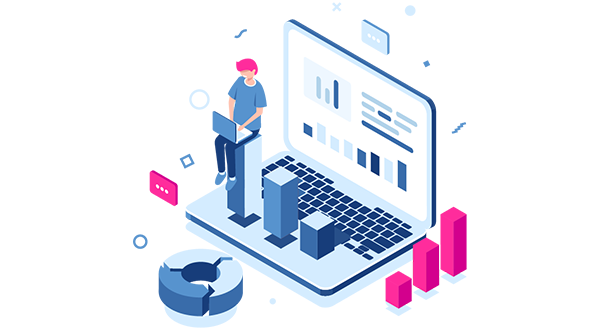

mLogica Thought Leaders: Transform Your Teradata System By Migrating it to the Cloud

Chandru Subramaniam, mLogica V.P., Channel Sales, ISV and Modernization.AI
Agility, efficiency, scalability and innovation are vital in today’s business landscape. However, if your private or public sector organization still relies on on-premise Teradata, you know these critical capabilities are in short supply.
Fortunately, the solution is straightforward: By migrating part or all of your Teradata workloads to the cloud on AWS, Google Cloud Platform (GCP) or Azure you can leverage enterprise-grade computing with limitless resources, money-saving scalability and leading-edge security.
Why Teradata in the Cloud is the Future
Cloud migration empowers Teradata-based organizations to harness the unmatched speed and efficiency of cloud-native tools and technologies, enabling a more scalable, agile and cost-efficient computing model while driving innovation.
The Compelling Business Case for Teradata in the Cloud
Real-Time Scaling: Typically in the past organizations opted for on-premise Teradata because they had high volume computing needs, including demanding analytics workloads. The downside? The infrastructure needed to support such requirements is extremely costly and lacks the flexibility to adapt to fluctuating workloads. By contrast, cloud platforms such as AWS, Google Cloud Platform (GCP) and Azure, all of which are compatible with Teradata in the cloud, offer dynamic scalability and limitless CPU power and storage, eliminating dependence on costly, finite on-premise resources.
Use Case: Retailers experience fluctuating workloads during throughout the year, including sharp seasonal peaks. Cloud platforms scale dynamically to accommodate these surges, allowing real-time insights into customer behavior and other factors that allow them to optimize inventory management. When demand subsides, the business can scale down to ensure efficiency.
Cost Flexibility: On-premise Teradata comes with high operational and maintenance expenses. Query costs and limited resource utilization, including CPU, I/O and processing time can significantly impact budgets, in addition to the substantial overhead incurred by data centers, maintenance and infrastructure.
Use Case: Taxpayer-funded public sector organizations, including local, state and federal agencies that use on-premise Teradata, need cost-effective solutions to optimize and upgrade their systems. The cloud's pay-as-you-go model eliminates unnecessary infrastructure expenses, while its flexible licensing fees, dynamic scalability and on-demand cloud native technologies facilitate service modernization.
Enhanced Innovation and Agility: The cloud fosters innovation by enabling businesses to nurture ideas and execute groundbreaking projects that continuously improve products and services. Companies with Teradata data warehouses can leverage the cloud for faster gap analysis and development of customized solutions, allowing for quicker integration of new functionalities and product roll-outs.
Use Case: Financial institutions that utilize Teradata analytics for critical fraud detection can benefit significantly from cloud migration. The cloud offers deeper insights into anomalies and inconsistencies, for faster identification of suspicious activities. Moreover, with on-demand availability of reliable test environments for new tools, cloud platforms allow businesses to develop targeted solutions to facilitate reporting and mitigate fraud.
Automated Administration and Management: Teradata is built to be data-intensive, requiring proactive management and administration for complex analytics tasks that consume significant computing resources. Cloud platforms allow organizations to automate tasks like patching, disaster recovery and software updates, freeing in-house IT teams to focus on more strategic initiatives.
Use Case: Media agencies can leverage the cloud to automate Teradata system tasks such as provisioning, patching, infrastructure management and backups. This allows their internal teams to focus on development tasks such as creating dashboards and data pipelines for content performance analysis.
Streamlined Data Integration: Cloud platforms such as AWS, Google Cloud Platform (GCP) and Azure offer a range of data integration services, simplifying the process of ingesting complex, multi-format data from diverse sources. This empowers organizations to gain faster, more holistic views of global factors affecting the business for data-driven insights and decision making.
Use Case: Manufacturing companies using Teradata on the cloud can leverage integration services that ingest data from sensors, connected devices, social media and customer management systems. This provides a 360-degree view of their production value chain and enables precise analysis of customer behavior and market trends.
Choosing the Right Migration Strategy
There are a variety of cloud migration options to consider, based on the unique needs of your organization. These include:
-
Lift and Shift: The simplest approach, lift and shift involves minimal modifications to your existing Teradata system. However, this may limit your access to some cloud-native features.
- Rehosting: Rehosting migrates your entire Teradata environment to the cloud with no changes to code, functions or features, although it may also limit access to desirable features of cloud platforms. Rehosting without considering cloud-specific optimizations may lead to sub-optimal performance.
Although rehosting and lift and shift are similar techniques, rehosting addresses the entire system, while lift and shift involves migrating an application. Private and public sector organizations that want to migrate their entire Teradata system, including databases and analytics, can opt to rehost. But if a company wants to migrate only their database, lift and shift is an option.
- Refactoring: This option involves modifying your database and data structure, utilizing automated migration software like mLogica’s GenAI-powered STAR*M Distributed Workload Modernization suite, to optimize performance and take full advantage of cloud-native features. Unlike traditional manual code rewriting, which is subject to high rates of human error and substantial cost overruns, automated refactoring is significantly faster, more accurate and cost-efficient.
The optimal approach depends on your specific needs. Partnering with an experienced cloud migration provider like mLogica, with expertise in Teradata, is crucial. We can assess your environment, analyze dependencies and risks and develop a successful migration strategy to minimize challenges.
Future-Proofing Your Business Starts Now
By migrating your Teradata system to AWS, Google Cloud Platform (GCP) or Azure, you gain access to leading-edge technologies that let you cost-effectively analyze, optimize and secure all business functions. The unlimited scalability and agility of Teradata on the cloud empower organizations to accelerate decision-making, enhance services and gain a lasting competitive edge.








































